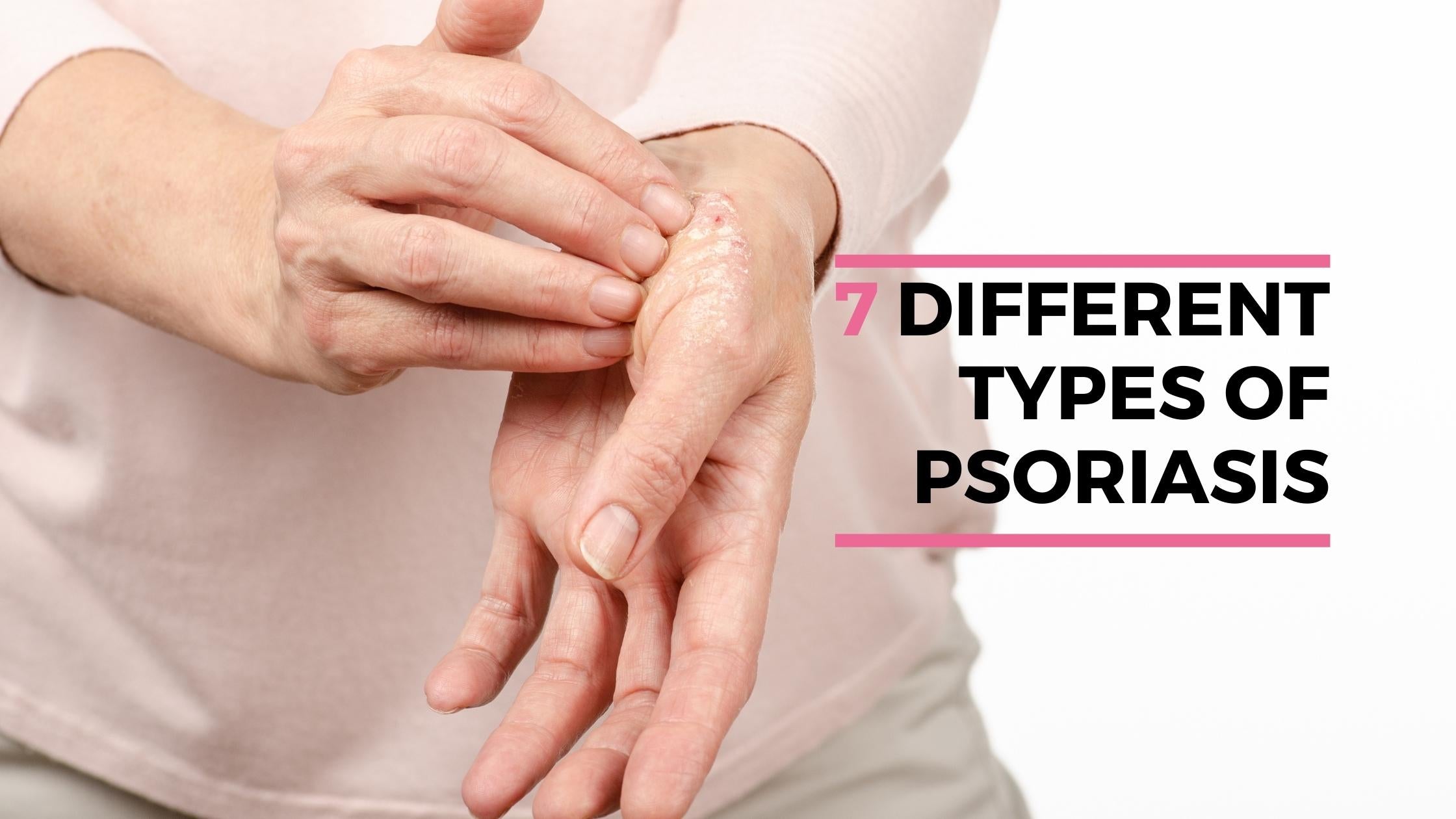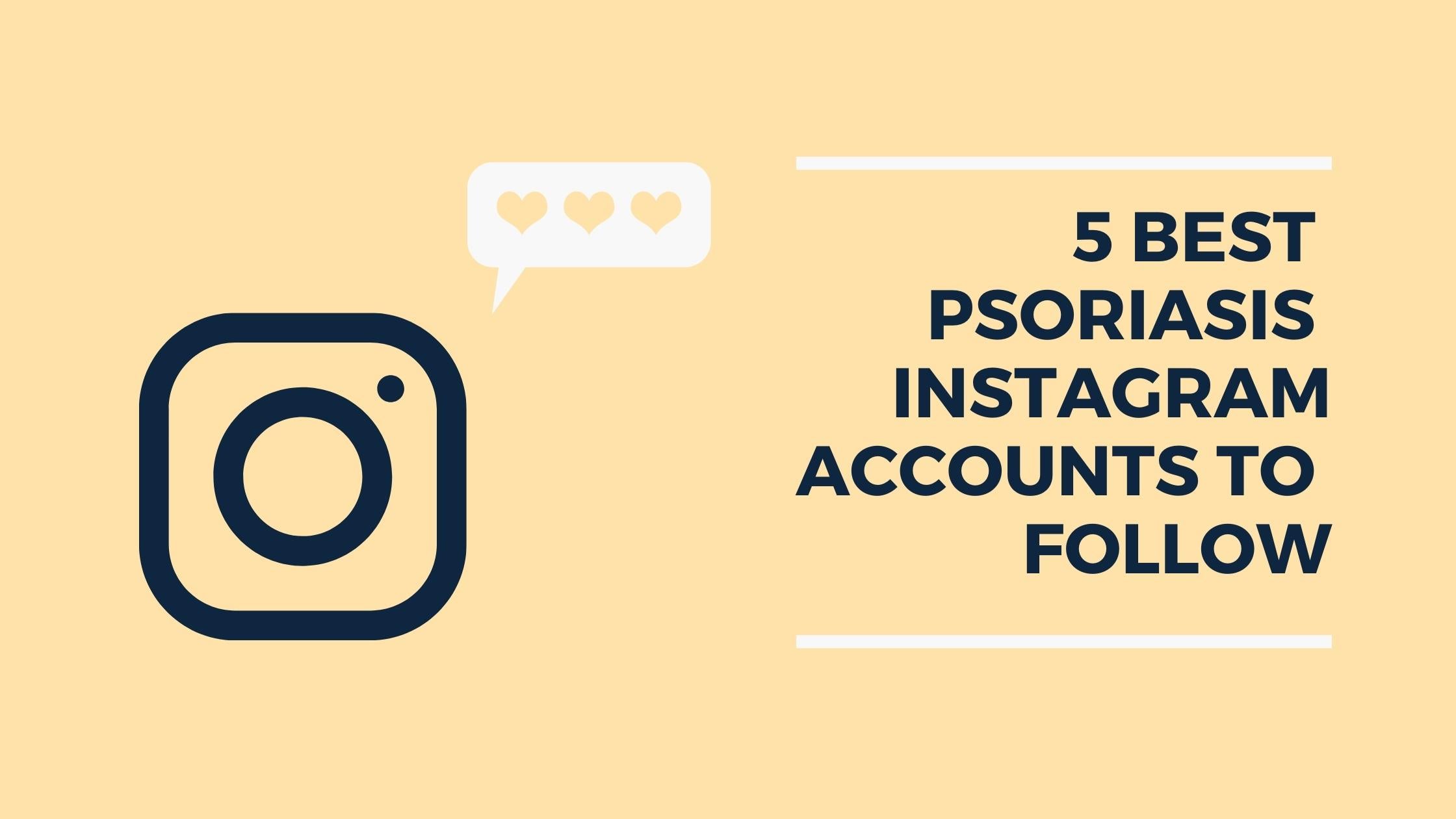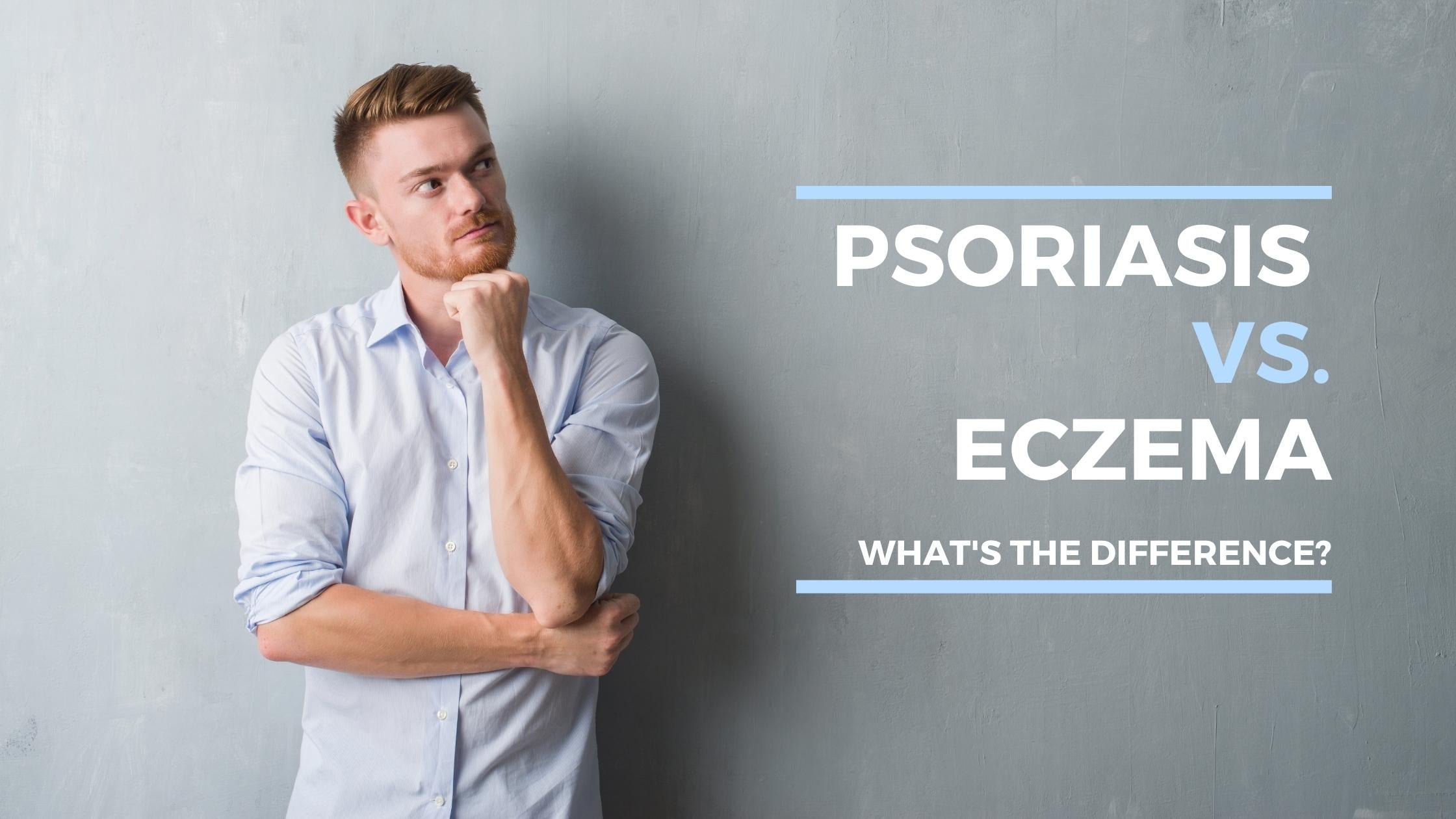
7 Types of Psoriasis & How to Tell the Difference
If you thought there was only one type of psoriasis - think again. There are actually seven different types and today, we’re diving into all of them. Keep reading on to find out how you can spot (pun-intended) the differences.
 1. Plaque Psoriasis
1. Plaque Psoriasis
You’ve probably heard of plaque psoriasis before, and that’s likely because it’s the most common type of psoriasis. In fact, it makes up about 80-90% of people suffering with it.
Plaque Psoriasis appears as red skin lesions with silvery scales. The affected skin is often raised and rough in texture, and may crack or bleed.
Plaque Psoriasis can be managed through topical treatments, light therapy, and oral steroids. Changes to lifestyle and diet may also help reduce symptoms and flare-ups.

2. Scalp Psoriasis
Next up is scalp psoriasis and the name says it all.
Those living with scalp psoriasis experience thick, sometimes powdery, and scaly patches covering the top of the head.
Oftentimes, the patches extend past the hairline and are prone to splitting, flaking, and bleeding.
About 45-56% of those living with psoriasis have scalp psoriasis, and it appears to be most common in people of color.
Since it’s located in a difficult to reach area, the most popular type of treatment for this kind of psoriasis is medicated shampoos.
As a part of our Psoriasis Honey skincare line, we offer the scalp nourishing kit to help hydrate and nourish those pesky dry patches!

3. Nail Psoriasis
Would you have guessed that psoriasis exists here too?
Nail psoriasis can affect both the fingernails and toenails, causing pitting, or small dents in the nail bed.
Discoloration may also turn the appearance of nails yellow, white, or brown.
Appearance isn’t the only symptom of nail psoriasis, though.
This type of psoriasis may also cause pain and tenderness as the nails are more prone to trapping debris, crumbling, and in rare cases, separating completely from the nail bed (onycholysis).

4. Guttate Psoriasis
Guttate Psoriasis is a type of psoriasis quite different from the first 3.
Most common in children and young adults, this type of psoriasis develops in about 8% of those already living with it.
Guttate psoriasis has a very quick onset, and tends to appear after infections like the flu or strep throat.
Identified by its small, round spots, guttate psoriasis responds well to phototherapy and oral medications.

5. Inverse Psoriasis
Like the name suggests, you’ll find inverse psoriasis on the inner folds of the skin.
These areas typically include the armpits, groin, and breasts, but may also be situated on other parts of the body.
Unlike its counterparts, this type of psoriasis appears as smooth and shiny, and depending on your skin tone, may be bright red or deep purple in coloration.
Inverse Psoriasis affects between 21-30% of people living with psoriasis, and treatment options include topical gels, creams, and lotions, or medications.
If you, or someone you know is looking to hydrate and cool those itches, you can check out our skin-renewing cream here.

6. Pustular Psoriasis
Much like inverse and scalp psoriasis, you can probably guess what pustular psoriasis entails.
Pus-filled blisters form (and re-form), over several days, and are typically the result of an infection or medication withdrawal.
Pustular psoriasis may occur in patches or small areas, and generally affects the fingers, hands, and feet.
In smaller areas, the most common type of treatment is steroid creams, and in larger areas, oral medications are used more frequently.

7. Erythrodermic Psoriasis
Last but not least… well, actually…it is the least - the least common type of psoriasis.
Erythrodermic psoriasis is the rarest type of psoriasis, existing in roughly 2% of the population living with it.
This type of psoriasis disrupts the body’s natural ability to function by toying with the body’s temperature and fluid balance which leads to an increased risk of ailments. These ailments include swelling, infections, pneumonia, and heart failure.
As far as appearance, “sheets” of redness and scales cover the skin, and sufferers report severe pain and itching.
Frequent hospitalizations and therapies are common due to the severity of this type of psoriasis. Treatments include prescription oral medications, medicated wet dressings, and topical steroids.

Finding Relief for Your Psoriasis
Looking to alleviate dry, painful skin?
Check out our Psoriasis Honey Skincare line today and browse our collection of products, specifically formulated with you in mind.
Our ingredients contain natural moisturizers like aloe vera and honey, to help nourish and calm even the most difficult psoriatic flare-ups.



Leave a comment
This site is protected by hCaptcha and the hCaptcha Privacy Policy and Terms of Service apply.